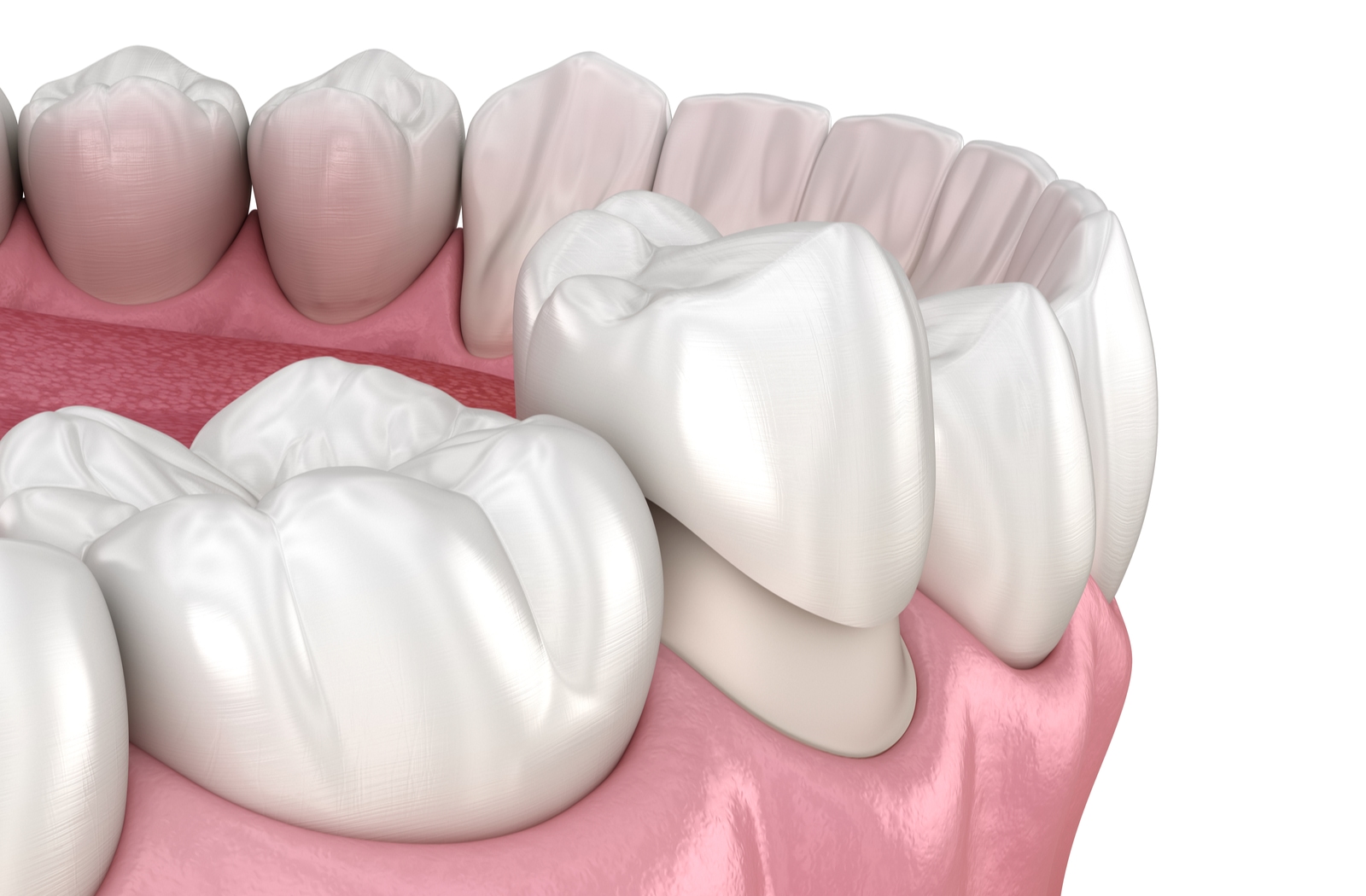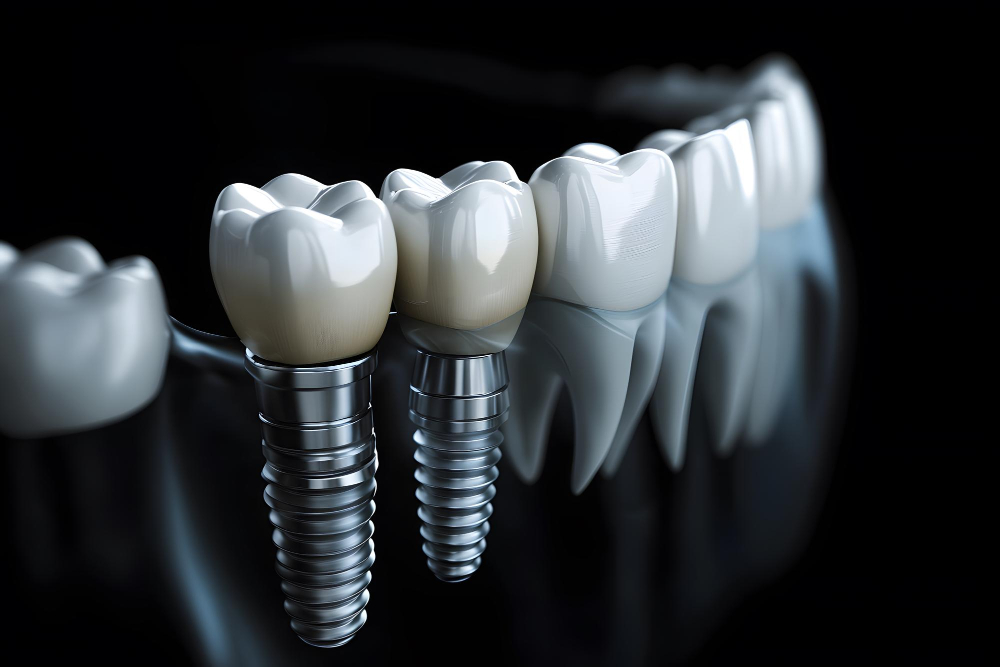
Children’s dental health is an important aspect of their overall well-being, and as parents or caregivers, we often find ourselves managing the challenges of growing teeth, teething pain, and cavities. Despite our best efforts with brushing, flossing, and regular dental visits, cavities can still form and, in some cases, lead to severe decay. When this happens, dental crowns are often a necessary treatment. While crowns might seem like a treatment reserved for adults, they play a crucial role in preserving the health of children’s teeth after severe decay.
This blog will dive into why dental crowns are essential for children’s teeth following severe decay, the different types of crowns available, how the process works, and how crowns help maintain long-term dental health. We’ll also touch on some important tips for preventing severe decay in the first place and maintaining healthy teeth as your child grows.
The Importance of Pediatric Dental Care
To understand why dental crowns are necessary, it’s important to grasp the significance of pediatric dental care. Children’s teeth, also called primary teeth or baby teeth, are not just temporary placeholders. They serve crucial roles in speech development, proper chewing, and the development of the adult teeth that will eventually replace them.
Baby teeth begin to emerge as early as six months old and continue to come in until the age of three. These teeth will stay in place until they begin falling out around the age of six, and permanent teeth start to take their place. Proper dental care for primary teeth is essential in ensuring that children develop healthy adult teeth. When baby teeth are compromised by decay, it can negatively impact a child’s ability to chew, speak, and maintain healthy adult teeth.
What Causes Severe Decay in Children’s Teeth?
To better understand why crowns are necessary, let’s first explore what causes severe decay in children’s teeth. Several factors contribute to this issue:
- Poor Oral Hygiene:When children do not brush or floss regularly, plaque builds up on their teeth. Plaque is a sticky film of bacteria that can erode enamel, causing cavities. Inadequate brushing is often the main cause of severe decay.
- Dietary Habits:Diets high in sugary foods and drinks, including juice and soda, contribute to tooth decay. Sugar feeds the bacteria in the mouth, leading to acid production, which erodes tooth enamel.
- Lack of Fluoride:Fluoride helps to strengthen enamel and prevent tooth decay. If a child doesn’t receive enough fluoride, either through drinking water or toothpaste, they may be more susceptible to cavities.
- Genetics:Some children may be more prone to dental decay due to genetic factors. For example, some children may have softer enamel or teeth that are more susceptible to damage from bacteria.
- Frequent Snacking:Snacking throughout the day, particularly on sugary or sticky foods, can increase the risk of tooth decay. When food stays on the teeth for extended periods, it feeds the bacteria that cause cavities.
- Dental Anxiety or Fear:Some children may resist dental visits due to anxiety or fear of pain, leading to neglected oral care and more severe decay over time.
When these factors combine, they can lead to severe decay that compromises the integrity of a child’s teeth. If the decay reaches the point where the tooth structure is severely damaged or compromised, a dental crown may be necessary to restore function and prevent further damage.
What Are Dental Crowns?
Dental crowns are protective caps that fit over a damaged tooth to restore its shape, size, and strength. They are commonly used to treat teeth that have suffered severe decay, fractures, or other damage. Crowns can be made from various materials, including metal, porcelain, and resin, depending on the location of the tooth, the severity of the damage, and aesthetic preferences.
A dental crown is placed over a tooth after it has been cleaned, shaped, and prepared. The goal of the crown is to restore the tooth to its original function and appearance while preventing further decay or damage. Crowns are especially important in pediatric dentistry, where primary teeth play a key role in a child’s development and oral health.
Why Are Dental Crowns Essential for Children’s Teeth After Severe Decay?
Now, let’s explore why dental crowns are an essential treatment for children’s teeth following severe decay. There are several key reasons for this:
1. Preserving the Tooth’s Function and Health
A dental crown serves as a protective barrier that covers a tooth after it has been weakened by decay. Without the crown, the tooth may become prone to further damage or infection. In cases of severe decay, the tooth may be hollowed out to the point where it is no longer capable of performing its function, such as chewing and grinding food.
By placing a crown, a dentist can restore the tooth’s strength and structure, allowing it to function properly until it eventually falls out naturally to make way for permanent teeth. This preservation of function is essential to ensure that the child can eat and speak properly, without discomfort or difficulty.
2. Preventing Further Decay and Infection
When a tooth is severely decayed, bacteria and decay can spread to the pulp (the inner part of the tooth) and lead to an infection. An infected tooth can cause pain, swelling, and even abscesses, which may require more invasive treatments such as root canals or extractions.
A dental crown helps prevent this by sealing off the tooth and protecting it from bacteria. By covering the decayed tooth, the crown keeps harmful substances out, reducing the risk of further decay and infection.
3. Maintaining the Space for Permanent Teeth
Another critical role of dental crowns in children is maintaining space for adult teeth. Baby teeth act as placeholders for permanent teeth, guiding them into their proper positions as they emerge. If a decayed baby tooth is left untreated, it may fall out prematurely, leading to misalignment or crowding of the adult teeth.
Crowns help preserve the baby tooth until it’s naturally ready to fall out. This preservation ensures that there is enough space for permanent teeth to grow in properly, which is essential for a child’s long-term dental health.
4. Improving Aesthetics and Confidence
Children’s smiles are an essential part of their self-esteem. When a child has a decayed or broken tooth, it can affect their appearance and even cause them to feel self-conscious. Crowns, especially those made from tooth-colored materials like porcelain, can help restore the appearance of a child’s smile.
A dental crown helps ensure that the child feels confident in their smile, improving their self-esteem and encouraging positive habits like regular brushing and flossing. It’s especially important to address the aesthetic concerns of a child, as feeling good about their appearance can impact their overall emotional well-being.
5. Minimizing Pain and Discomfort
Severe decay can cause a great deal of pain and discomfort for a child. When the decay reaches the tooth’s pulp, it can lead to intense toothaches, sensitivity to hot and cold, and difficulty eating. A dental crown not only restores the tooth’s structure but also relieves pain by protecting the exposed tooth and preventing further irritation to the nerves.
After the crown is placed, the child can experience immediate relief from discomfort, making it easier for them to eat, speak, and engage in daily activities without pain.
6. Long-Lasting Solution
Dental crowns are designed to be durable and long-lasting. When properly cared for, a dental crown can last many years, providing ongoing protection for a child’s teeth. This makes crowns an effective long-term solution for severe decay, as they help prevent the need for more extensive treatments like extractions or root canals.
7. Boosting Overall Oral Health
By addressing severe decay with a dental crown, the overall oral health of a child is greatly improved. Crowns help maintain a child’s bite, prevent misalignment, and ensure that the teeth are in good condition for the development of adult teeth. This proactive approach to dental health reduces the need for future interventions and sets the foundation for healthy teeth into adulthood.
Types of Dental Crowns for Children
There are several types of dental crowns available, and the right one for your child depends on factors such as the location of the tooth, the extent of the decay, and your child’s unique needs. The most common types of dental crowns used in pediatric dentistry include:
- Stainless Steel Crowns:These are the most common type of crowns used for children’s back teeth (molars) due to their durability and cost-effectiveness. Stainless steel crowns are pre-made and can be fitted quickly. While they are not as aesthetically pleasing as other options, they are ideal for areas that are not visible.
- Tooth-Colored Crowns (Porcelain or Resin):These crowns are often used for more visible teeth, such as the front teeth. They offer a natural appearance and blend seamlessly with the surrounding teeth. However, they may not be as durable as stainless steel crowns, so they are typically used for teeth that don’t endure heavy chewing pressure.
- Zirconia Crowns:Zirconia crowns are a more durable and aesthetically pleasing option than stainless steel. They are often used for both front and back teeth and are known for their strength and tooth-like appearance.
- Composite Resin Crowns:These are made from a composite material that can be customized to match the natural color of the child’s teeth. Composite crowns are less durable than stainless steel but can be an excellent option for teeth that are more visible.
The Dental Crown Procedure for Children
The process of placing a dental crown on a child’s tooth is generally straightforward and minimally invasive. Here’s a brief overview of what parents can expect:
- Initial Consultation:The dentist will evaluate the extent of the decay and determine if a crown is the best option. X-rays may be taken to assess the damage and decide if a crown will be effective.
- Tooth Preparation:The decayed portion of the tooth will be removed, and the tooth will be cleaned and shaped to accommodate the crown. This may involve numbing the area to ensure your child is comfortable.
- Crown Placement:Once the tooth is prepared, the dentist will place the crown over the tooth and adjust it for a proper fit. If needed, impressions may be taken to create a custom crown.
- Final Adjustments:The crown will be bonded to the tooth, and the dentist will make any final adjustments to ensure that the bite is correct and that the crown fits comfortably.
In some cases, a temporary crown may be placed while a permanent crown is being made.
Tips for Preventing Severe Decay in Children
While dental crowns are an essential treatment for severe decay, prevention is always the best approach. Here are some tips for preventing cavities and maintaining healthy teeth in children:
- Encourage Good Oral Hygiene:Make sure your child brushes their teeth at least twice a day, flosses daily, and visits the dentist regularly for checkups.
- Limit Sugary Foods and Drinks:Avoid giving your child sugary snacks and drinks, especially between meals. Offer healthier options like fruits, vegetables, and water.
- Use Fluoride:Ensure your child uses fluoride toothpaste and drinks fluoridated water to help strengthen enamel and prevent cavities.
- Monitor Snacking Habits:Reduce frequent snacking to avoid extended exposure to sugar and acids.
- Sealants:Consider dental sealants for your child’s molars. These thin coatings help protect the teeth from decay.
Conclusion
Dental crowns are a vital treatment for children with severe decay, helping to restore tooth function, prevent further damage, and preserve a healthy smile. They provide long-lasting protection and comfort for children while promoting better overall dental health. By addressing severe decay with dental crowns, you ensure your child’s teeth are properly cared for as they grow, contributing to their long-term oral health and confidence.
If your child has severe decay, don’t hesitate to consult with a pediatric dentist to explore the best options for their dental care.
FAQs
- Why are dental crowns necessary for children’s teeth after severe decay?Dental crowns are essential for restoring a decayed tooth’s strength, preventing further damage, and preserving the tooth’s function. They also help maintain space for permanent teeth and reduce pain caused by decay.
- What types of crowns are used for children’s teeth?Common types of dental crowns for children include stainless steel, porcelain, zirconia, and composite resin crowns. The choice depends on the location of the tooth, the extent of decay, and aesthetic preferences.
- How does the dental crown procedure for children work?The procedure involves cleaning and preparing the decayed tooth, then placing a crown over it. The dentist ensures proper fit and function, and may use temporary crowns while a permanent one is being made.
- Can dental crowns prevent further tooth decay in children?Yes, dental crowns protect decayed teeth from bacteria and seal the tooth, preventing further decay and infection by creating a barrier to harmful substances.
- How can I prevent severe decay in my child’s teeth?Encourage good oral hygiene, limit sugary foods, use fluoride toothpaste, and consider dental sealants. Regular dental checkups also help catch potential issues early.


